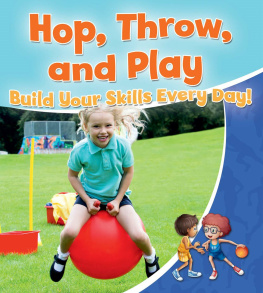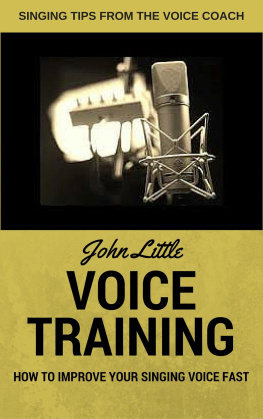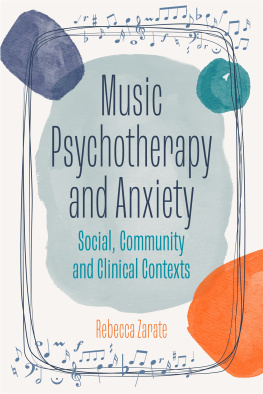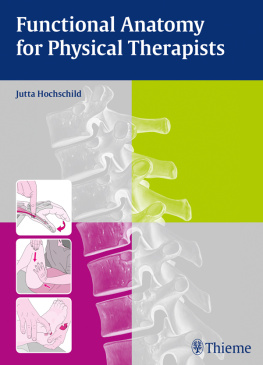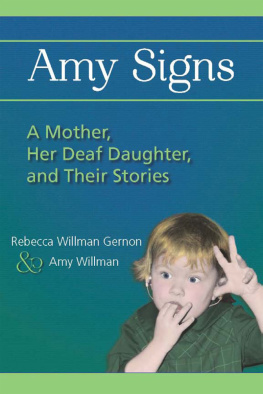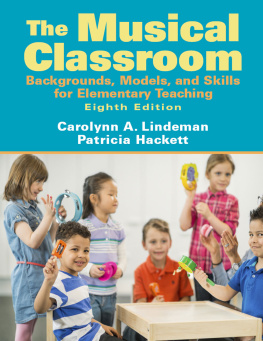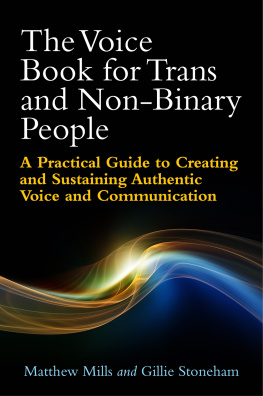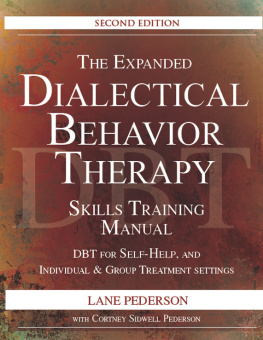Rebecca Engen - Functional voice skills for music therapists
Here you can read online Rebecca Engen - Functional voice skills for music therapists full text of the book (entire story) in english for free. Download pdf and epub, get meaning, cover and reviews about this ebook. year: 2018, genre: Home and family. Description of the work, (preface) as well as reviews are available. Best literature library LitArk.com created for fans of good reading and offers a wide selection of genres:
Romance novel
Science fiction
Adventure
Detective
Science
History
Home and family
Prose
Art
Politics
Computer
Non-fiction
Religion
Business
Children
Humor
Choose a favorite category and find really read worthwhile books. Enjoy immersion in the world of imagination, feel the emotions of the characters or learn something new for yourself, make an fascinating discovery.

- Book:Functional voice skills for music therapists
- Author:
- Genre:
- Year:2018
- Rating:4 / 5
- Favourites:Add to favourites
- Your mark:
- 80
- 1
- 2
- 3
- 4
- 5
Functional voice skills for music therapists: summary, description and annotation
We offer to read an annotation, description, summary or preface (depends on what the author of the book "Functional voice skills for music therapists" wrote himself). If you haven't found the necessary information about the book — write in the comments, we will try to find it.
Functional voice skills for music therapists — read online for free the complete book (whole text) full work
Below is the text of the book, divided by pages. System saving the place of the last page read, allows you to conveniently read the book "Functional voice skills for music therapists" online for free, without having to search again every time where you left off. Put a bookmark, and you can go to the page where you finished reading at any time.
Font size:
Interval:
Bookmark:
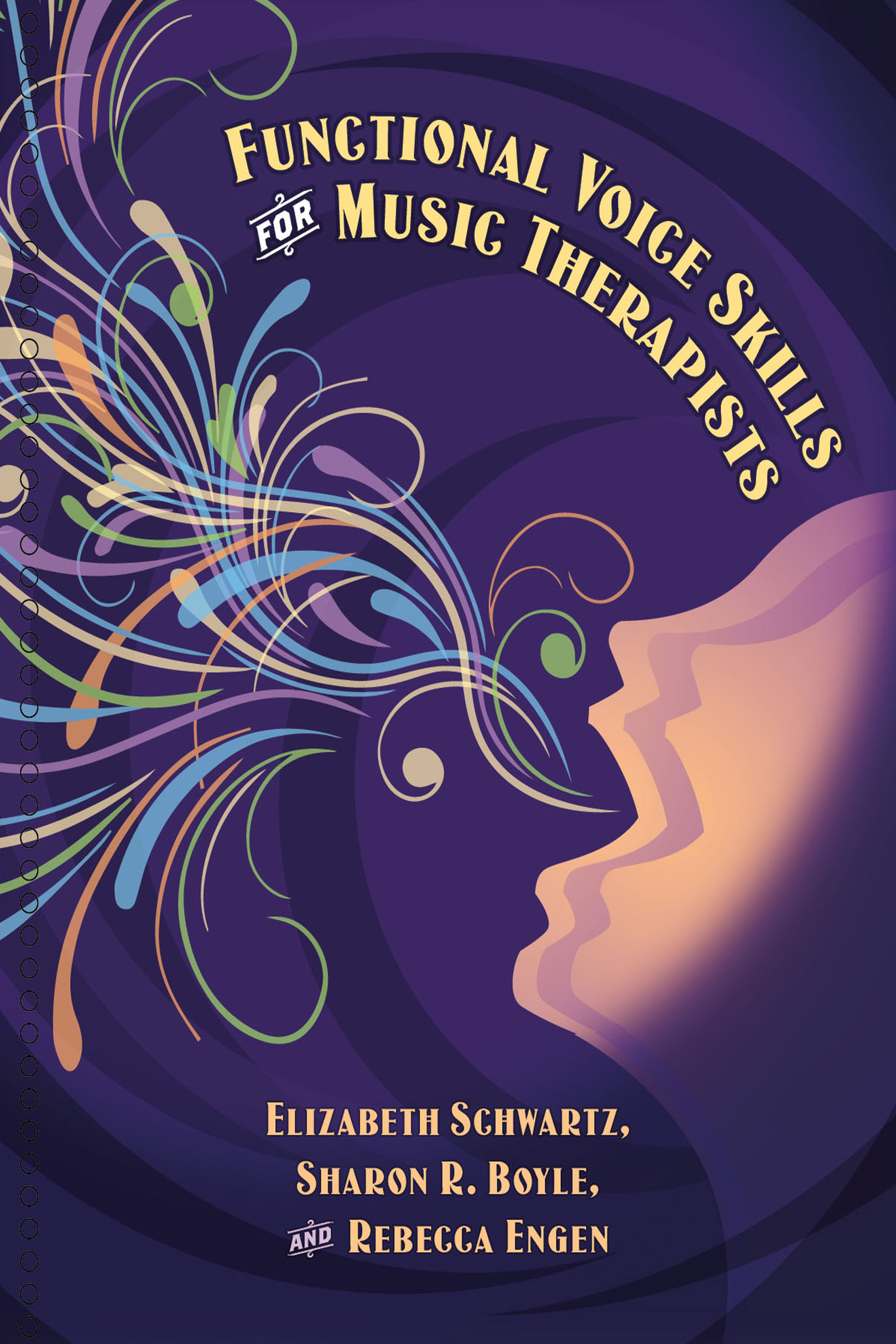
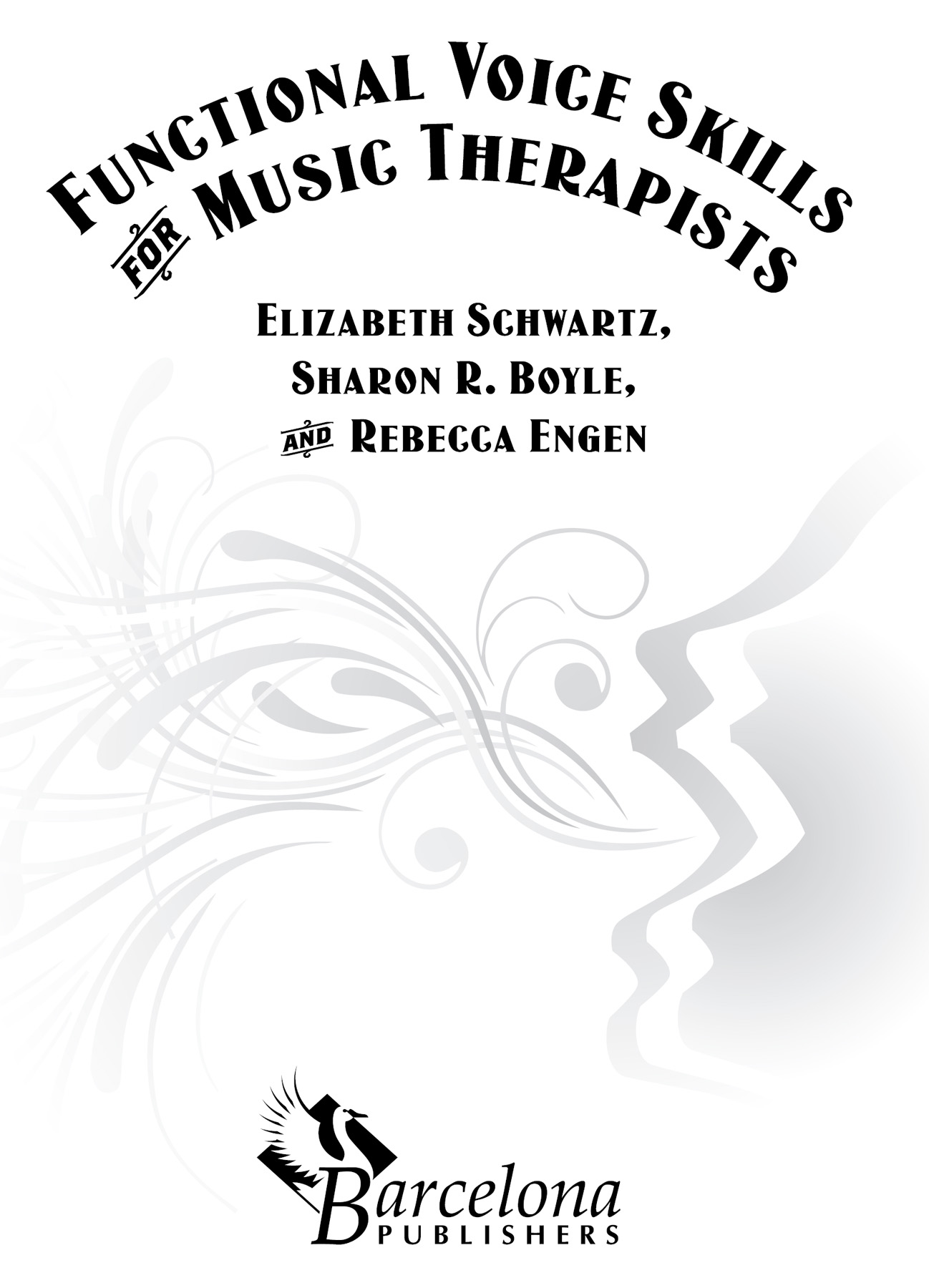
Functional Voice Skills for Music Therapists
Copyright 2018 by Barcelona Publishers
All rights reserved. No part of this book may be reproduced, translated, or distributed in any form whatsoever without prior written permission from Barcelona Publishers
Print ISBN: 9781945411328
E-ISBN: 9781945411335
Barcelona Publishers
10231 Plano Rd.
Dallas TX 75238
SAN 298-6299
North American Orders
www.barcelonapublishers.com
International Orders
www.eurospanbookstore.com/barcelona
Cover design: 2018 Frank McShane
Copy-editor: Jack Burnett
DEDICATIONS
To the memory of Evelyn Selesky, and to her Warrior Women who work tirelessly every day to bring music therapy to their communities.
Elizabeth Schwartz
For all who seek to use their voices for connection and expression with others for my family, colleagues, and students who continually keep the music alive within and around me.
Sharon R. Boyle
To anyone seeking his or her authentic and powerful voice as well as to those who have supported my efforts to discover my own; let your heart sing.
Rebecca Engen
ACKNOWLEDGMENTS
The authors are extremely grateful for the support and guidance of colleagues and family in preparing this manuscript, especially Michael Boswell, Christina Pier, and Joseph Schwartz.
INTRODUCTION
References to singing, chanting, toning, rapping, humming, and talking within therapy sessions fills music therapy literature. The voice might be the single most used instrument in music therapy practice. Significant advances in understanding effective therapeutic use of the voice in music therapy have been written about by many music therapists including Diane Austin, Felicity Baker, Sylka Uhlig, Joanne Loewy, Cheryl Dileo, Helen Shoemark, and Jeannette Tamplin. They write eloquently about the vocal qualities used to create therapeutic opportunities for their clients. While these descriptions of vocal interventions might be clear to a singer, or an experienced music therapist, specific information on how to develop these effective qualities was not included since the focus of the writing was on clinical process.
The purpose of this book is to support students, young clinicians, and educators by providing basic and practical information and training in the technique of developing a rich, varied, and engaging clinical voice for use in music therapy practice. Because the voice is so individual and unique, the material is designed to guide each music therapist through a very personal journey of exploration and discovery. It is not meant to set a standard of vocal skill, but to help each music therapist learn how to make the most of his or her own voice.
Since the voice is integrated into every fiber of a persons self, it is nearly impossible to separate how much of the voice is a function of the body and how much of the personality. Similar to the nature versus nurture debate, there is undoubtedly no reason for the purposes of this book to compartmentalize how and why a persons voice becomes their signature sound. Instead, we will examine and learn about the voice as an integration of the body and its physical characteristics, of functions of the mind that influence the voice, and of the motivation that compels all human beings as well as music therapists to want to use their voice to communicate and create relationships.
Why concentrate on the voice with all the other musical possibilities open to the therapist? The voice is the one instrument that every therapist uses in virtually every session. We sing or hum or chant different sounds. We also talk, using words in combination with musically related qualities such as inflection, volume, or tempo. We use our voice in every type of music therapy from clinical work with hospitalized infants to the verbal processing of musical guided imagery.
Perhaps because the voice is so ubiquitous, effective use of it in therapy has been assumed in both music therapy literature and in music therapy education. Current music therapy competencies generally just include simplistic requirements of singing in tune with a vocal quality loud enough to be heard. Anyone observing a skilled music therapist who effortlessly uses vocal interventions will quickly realize there is so much more that can be done with the voice. In order to meet the client musically, they might sing softly and pleasantly, but they might also growl, scream, or grunt. They might hum, talk hypnotically, or whistle. This type of vocal flexibility requires skill and training that goes well beyond the singing lessons provided in a non music-therapy based studio. Understanding and applying the exercises and information in this book will help you develop this varied vocal ability while maintaining voice health.
The voice of the therapist and the voice of the client are the auditory representation of the inner person. Similar to an infant and mother, the bond between therapist and client is created through genuine vocal reciprocity and communication. Pitch, tone, timbre, rhythmicity, and dynamics all contribute to the distinctive sound that is our voice. For the client, that distinctive sound of the therapists voice becomes the bridge on which to cross to health or wholeness. The therapists authentic voice becomes a valuable tool in which the client can find assurances of trust, empathy and hope. Vocal honesty and truth is built on the actual voice that each therapist brings to every session. However, within each real and authentic voice there are unexamined and unexplored depths, which can be enhanced through knowledge, practice, and reflection. It is the enhancement of each therapists real voice that is the aim of this guide.
To begin, Chapter One examines historical and contemporary music therapy literature to tease out the vocal qualities written about in research and in practice. This ranges from Paul Nordoffs penchant for whistling to the current crop of hip- hop creating music therapists. The variety of therapeutic vocal qualities reported is astonishing. These practitioners provide a foundation for how varying vocal qualities can become a critical intervention for reaching and supporting the client and creating an effective means for therapeutic action.
Chapter Two begins the journey to discover or uncover the authentic voice through looking at the connection between the mind, body, and voice. Genetics, culture, identity, environment, exposure, and experience all influence vocal sound, vocal efficacy, and vocal health. Each of these contributing factors deserves an in-depth exploration in order to fully understand the complexity of each persons unique voice.
Chapter Three will study the physical mechanism that creates the voice. This includes how the entire body contributes to initiating, making, and sustaining sounds. It will also look at our ability to hear and receive sound input. The physical and sensory components, which allow for vocal resonance, sound production, breath, support, and reception of sound will all be reviewed.
In Chapter Four, the critical nature of vocal health will take center stage. Current researchers have shown the significant impact that poor vocal practices have had on the ability of music therapists to perform their job. Problems with vocal health should be a concern for the entire profession of music therapy and is one of the prime motivators for adding this knowledge base to the music therapy literature. Practical and immediate suggestions and solutions for maintaining vocal well-being will be outlined.
Font size:
Interval:
Bookmark:
Similar books «Functional voice skills for music therapists»
Look at similar books to Functional voice skills for music therapists. We have selected literature similar in name and meaning in the hope of providing readers with more options to find new, interesting, not yet read works.
Discussion, reviews of the book Functional voice skills for music therapists and just readers' own opinions. Leave your comments, write what you think about the work, its meaning or the main characters. Specify what exactly you liked and what you didn't like, and why you think so.


